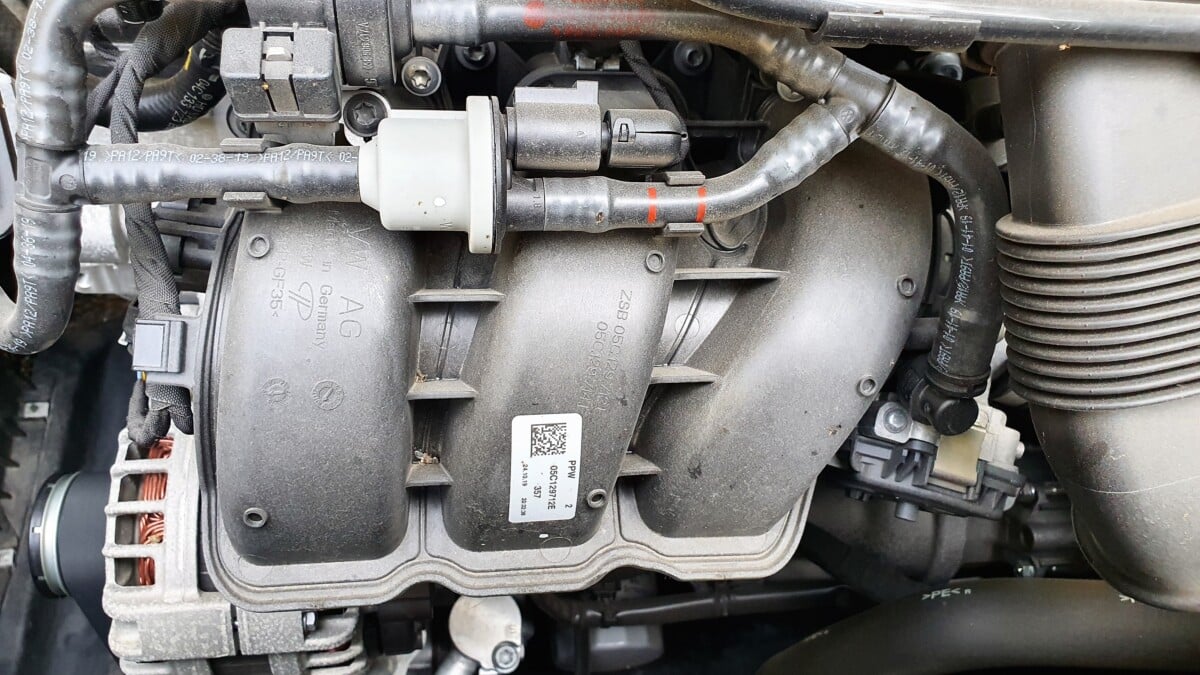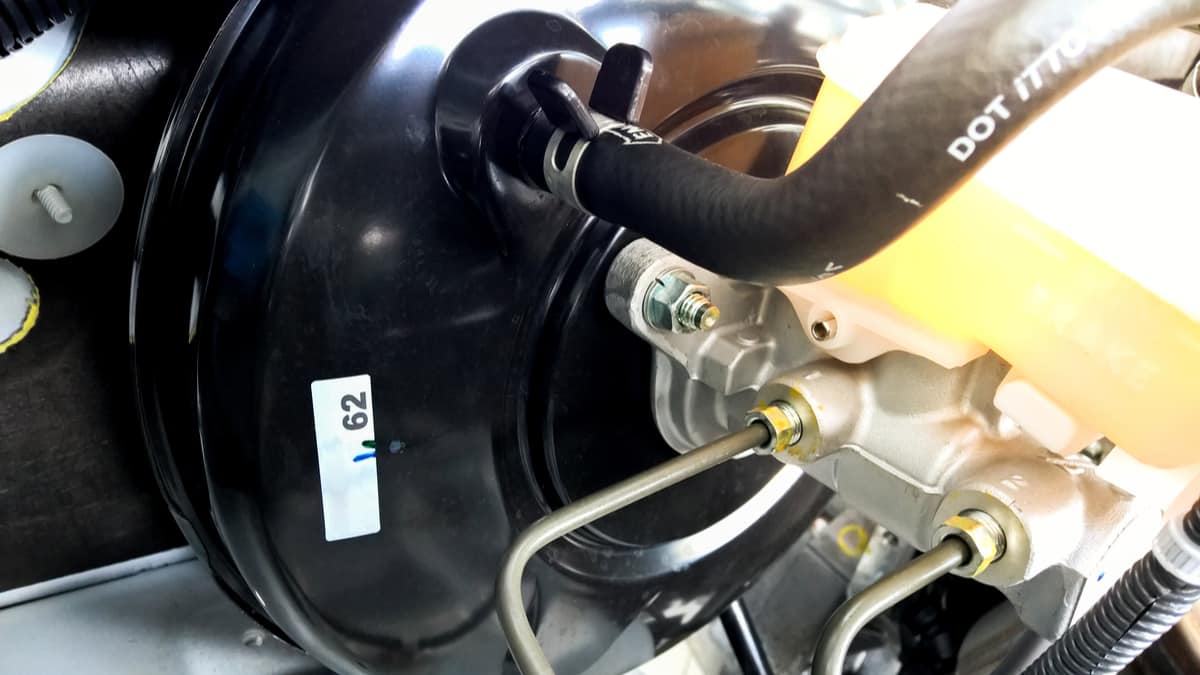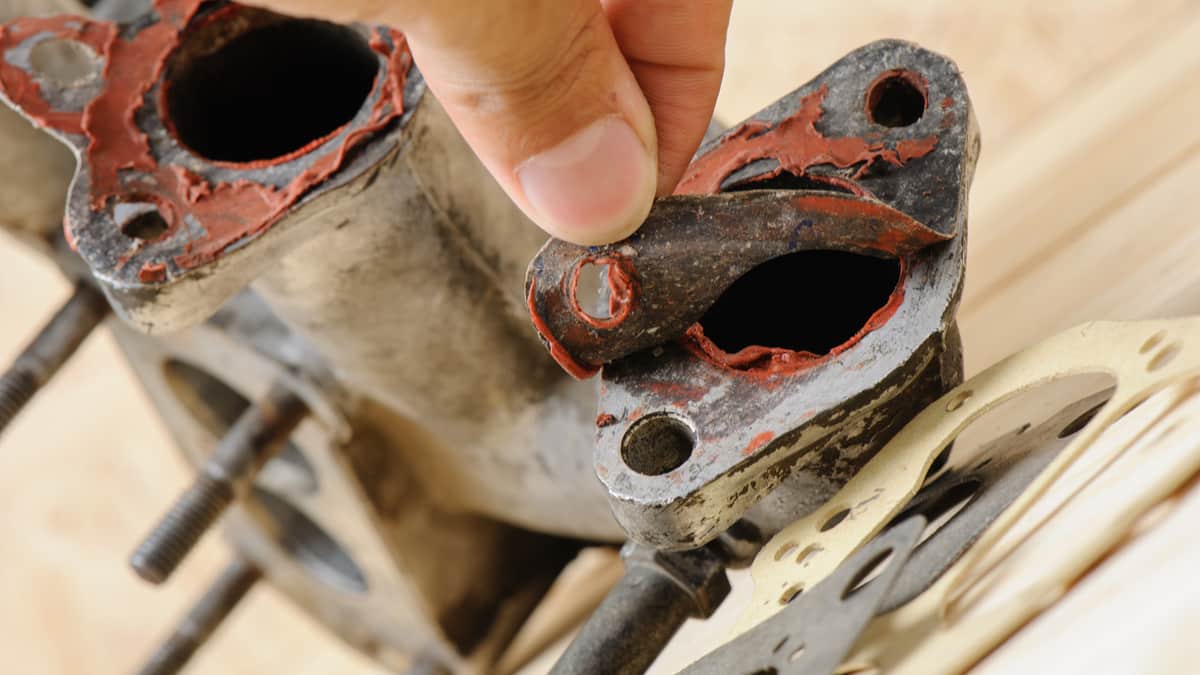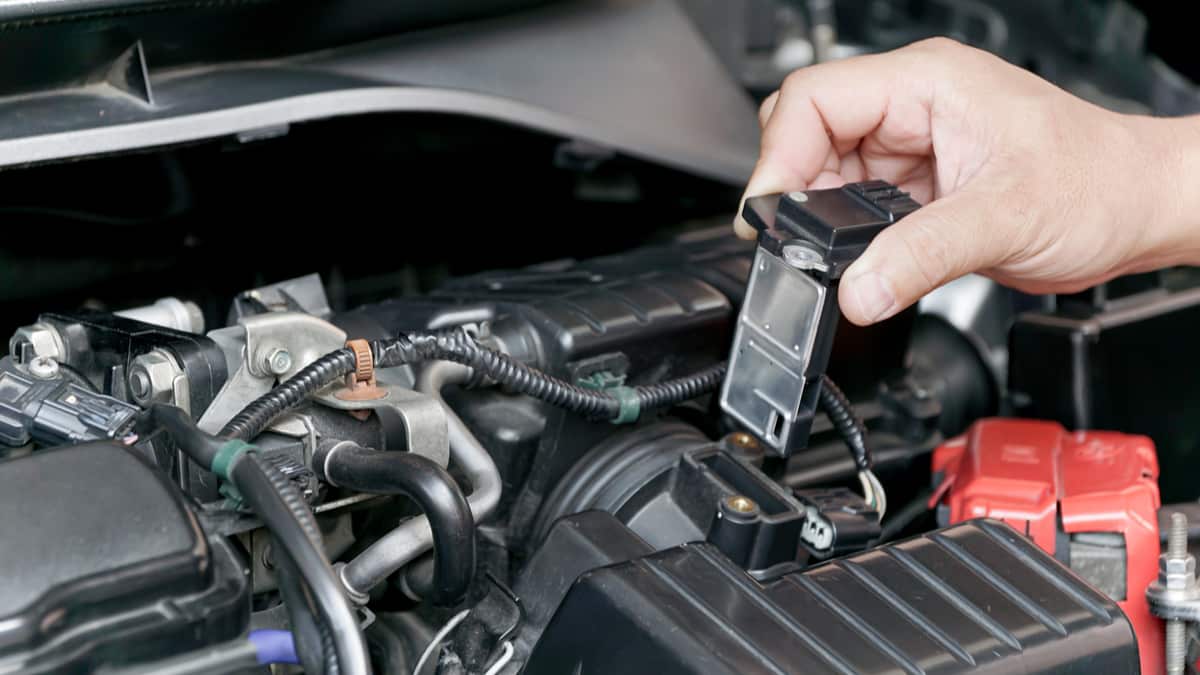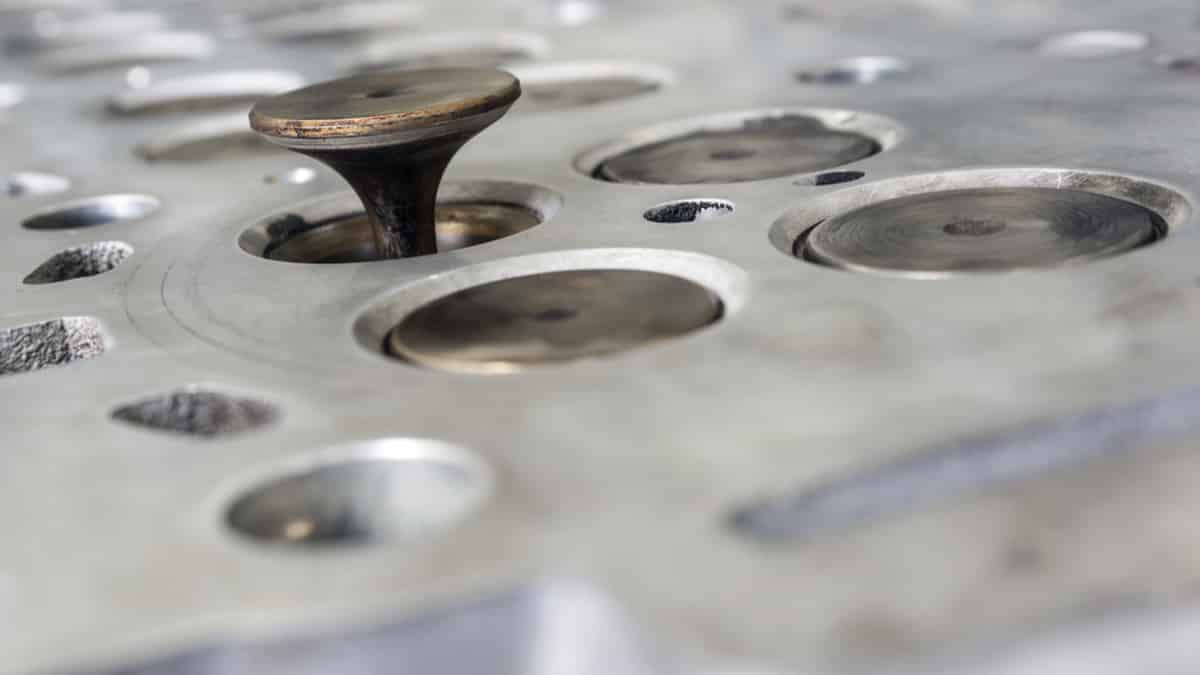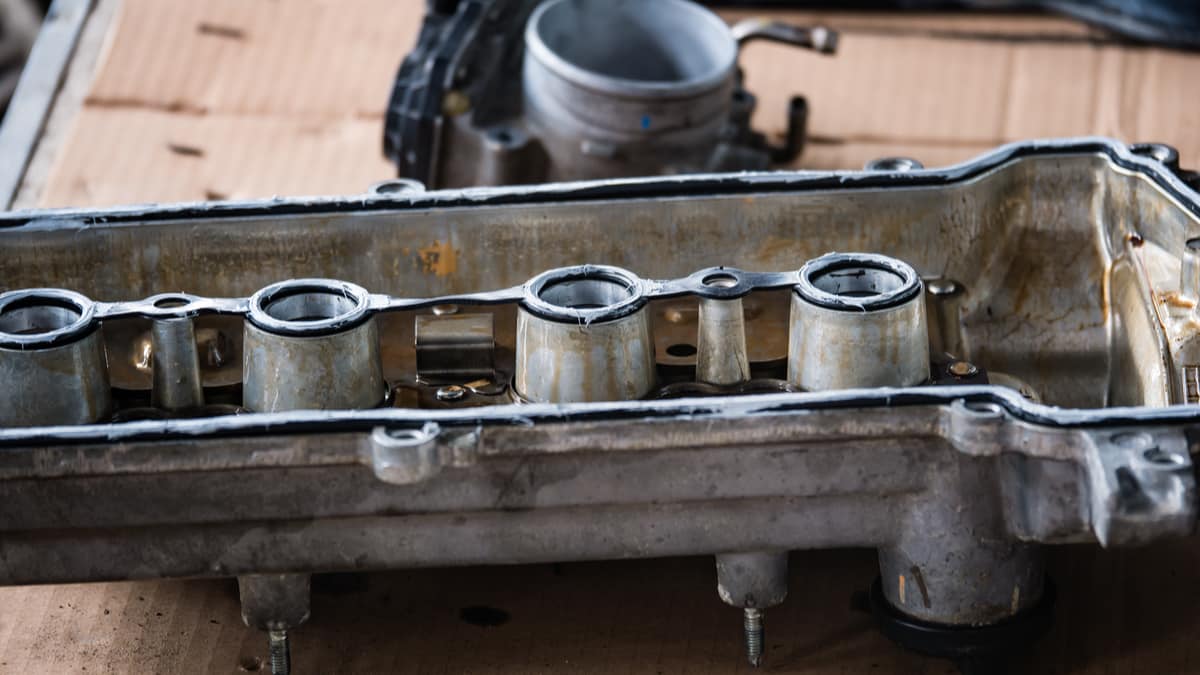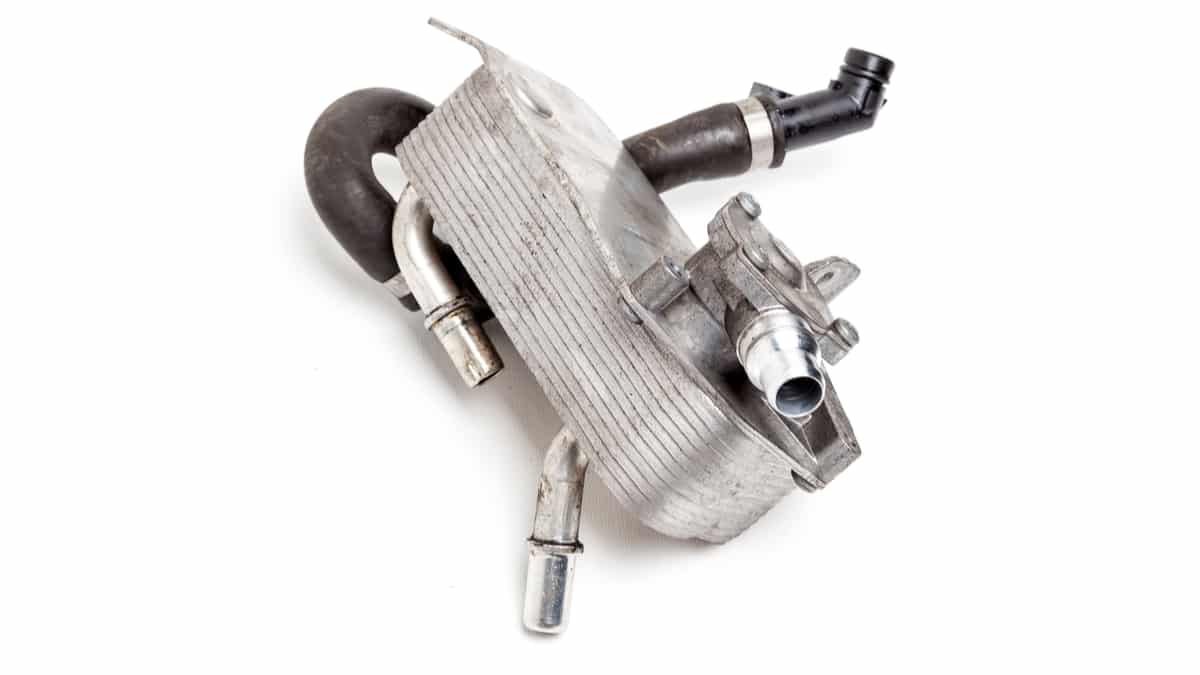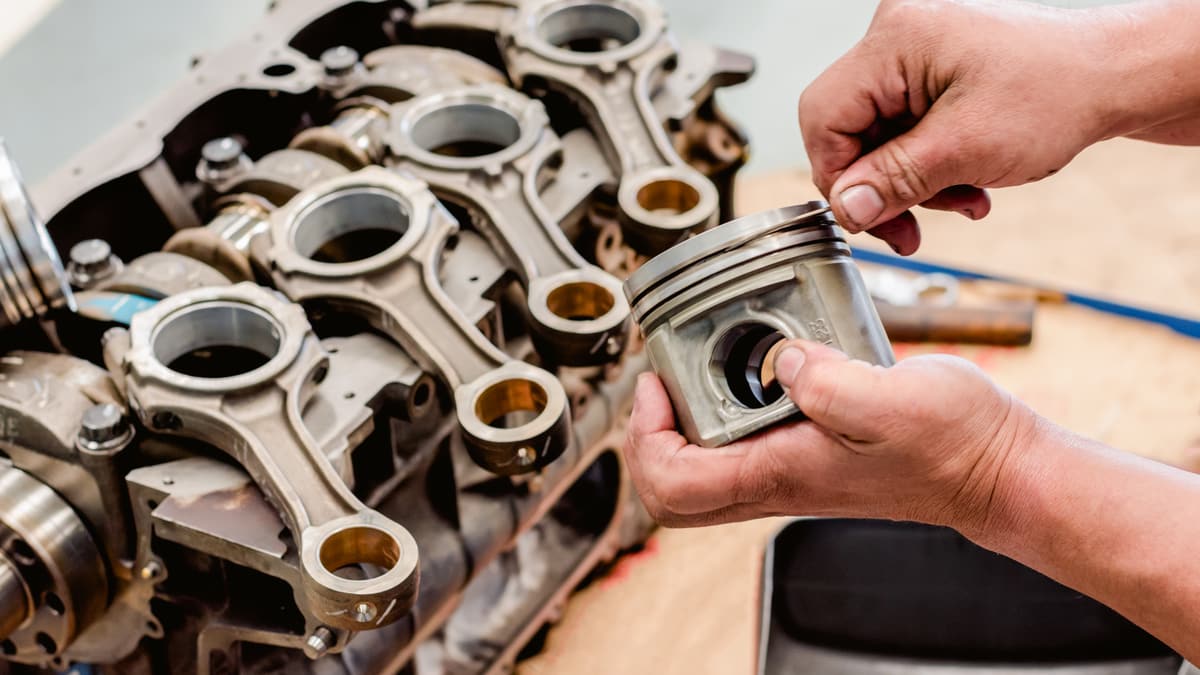The intake manifold is responsible for the precise distribution of air into the engine cylinders for perfect combustion.
Therefore, the intake manifold plays an important part in the performance of your car engine.
Unfortunately, the intake manifold sometimes fails. But what happens if it does, and how much will it cost to get it fixed?
In this article, I will discuss the most common symptoms of a bad intake manifold and how much it costs to replace or fix it. Let’s take a look at the signs first!
Symptoms Of A Cracked or Bad Intake Manifold
The most common symptoms of a bad or cracked intake manifold are rough idle and a check engine light on your dashboard. You may also notice a loss in engine performance together with misfires. In rare cases, it may cause an external coolant leak.
Here is a more detailed list of the signs of a bad or cracked intake manifold to look for:
1. Check Engine Light
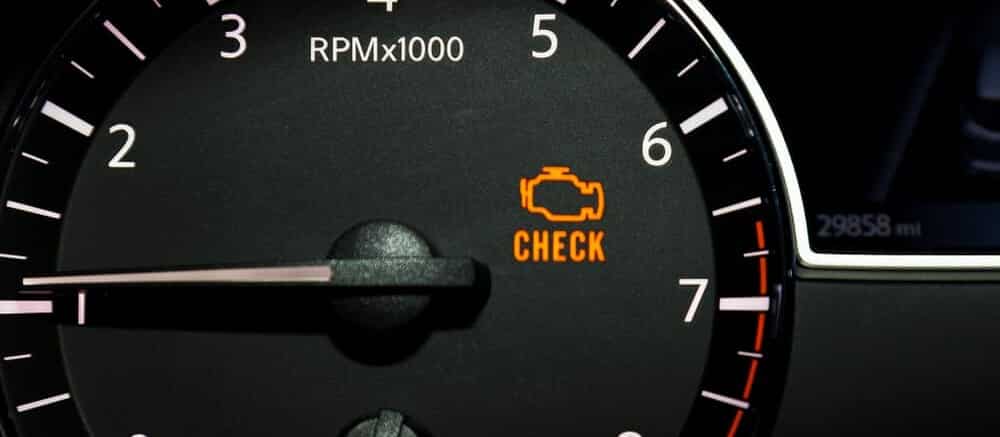
The engine control unit is constantly monitoring your car’s sensors while you are driving it, and if any of them sends the wrong values compared to the pre-set values, the check engine light will appear on your dashboard.
If you have a bad intake manifold, the air-fuel mixture will be different than what it is supposed to be, and therefore the check engine light will show up on your dashboard.
When the check engine light shows up, there is also a trouble code stored in the engine control unit that you need to read to continue the troubleshooting.
2. Misfires
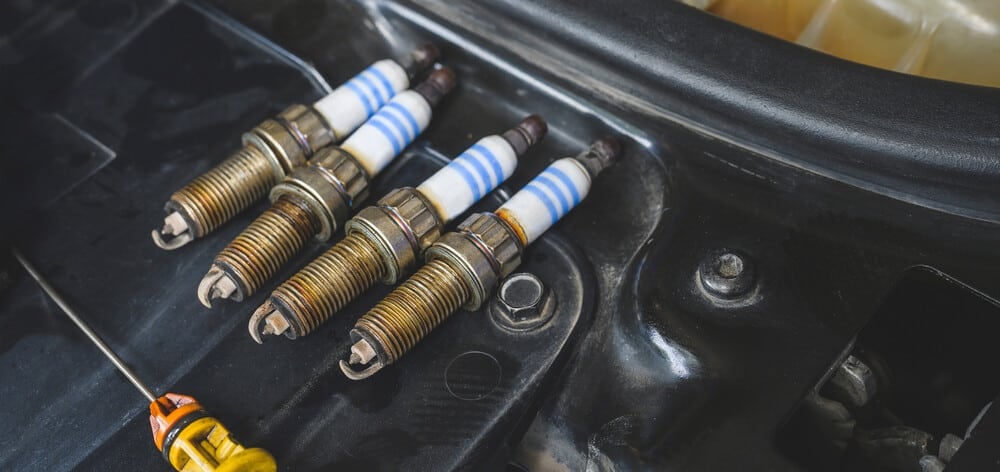
When there is a crack or a coolant leak in the intake manifold, it will result in an extra amount of air compared to fuel entering the combustion chamber. This will result in misfires, which happen when the combustion process gets disturbed and is not completed.
This can also happen due to coolant water in the cylinder coming from an internal crack in the intake manifold or around the intake manifold gasket. If you have misfires, you will also often find a related trouble code in the engine control module.
Learn more: 5 Symptoms of a Bad Intake Manifold Gasket
3. Rough Idle

As you may know by now, a bad or cracked intake manifold will cause the air-fuel mixture to go bad. A bad air-fuel mixture can also cause your idle to become rough.
The engine is susceptible to problems at idle because it needs to run perfectly to hold a steady RPM. This is why you will most likely first notice an intake manifold problem at idle.
4. Loss in Engine Performance

When the intake manifold fails, the fuel and air ratio is affected. We all know how important the air-fuel mixture is for efficient combustion, so any effect on this mixture can affect your car’s fuel consumption.
You will find that it will burn more fuel, and you will have to refill the fuel tank more often. Not only that, but you will also feel that your car is not accelerating properly and that the engine may have hiccups.
Whenever this happens, you need to check the intake manifold for any signs of leaks.
5. External coolant leaks
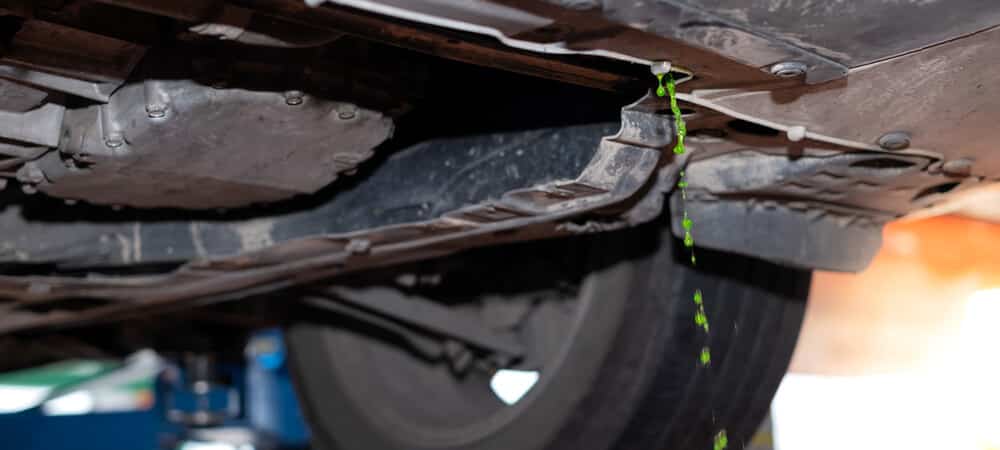
If the intake manifold suffers from an internal crack or a problem near the intake manifold gasket, the coolant can start to leak out in the engine bay.
If you have a pool of coolant under your car after a night in the garage, it is definitely time to check for any signs of leaks around the intake manifold.
Often the leak comes from under the intake manifold, which can be really difficult to spot.
6. Engine Overheating

If the intake manifold has a crack and causes the coolant to pour out in the engine bay or into the combustion chamber, the engine’s first effect starts to overheat due to the loss of coolant.
You will see this while driving when the temperature gauge rises on your dashboard, and it is advisable to see the mechanic as soon as this happens, as an overheated engine can seize up and stop working completely.
The best way to detect this is to check the coolant level in the engine bay regularly. If you notice that it has slowly started to decrease, it is time to check for coolant leaks.
Learn more about overheating here: Overheating car engine.
The Function of the intake manifold

The purpose of the intake manifold is to deliver an even amount of air into the car engine’s cylinders.
In older cars, the carburetor injected fuel before the intake manifold, and for these engines, the intake manifold needed to spread this fuel evenly.
Newer cars inject fuel at the end of the intake manifold with fuel injectors, and the even spread is not as important anymore as it was before.
Newer cars even have swirl flaps inside them, creating a better air-swirl when entering the combustion chamber, which creates a more efficient engine.
Intake Manifold Location
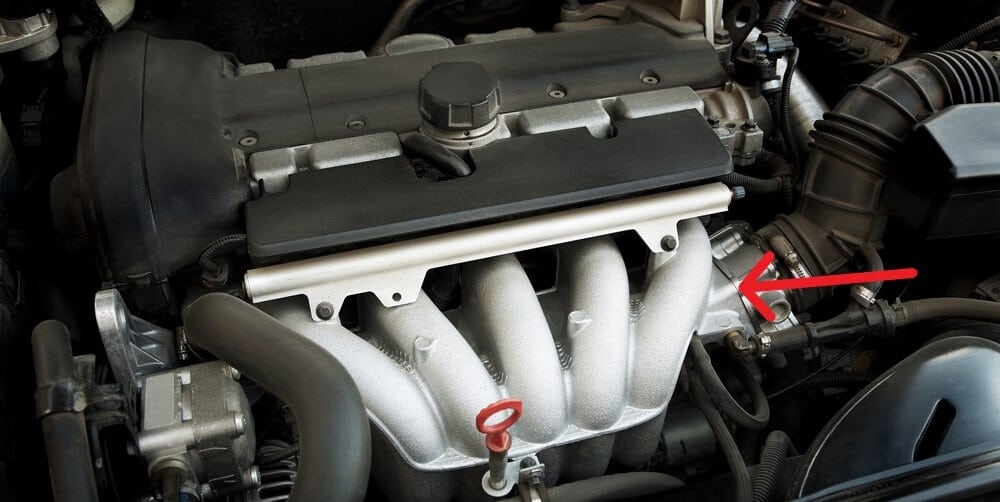
The intake manifold is located on the cylinder head on one side of the engine. In V-engines, the intake manifold is located in the middle between the cylinder heads.
The intake manifold is very easy to spot in most car engines because it is often installed high up in the engine bay.
In some cars, you need to remove some plastic covers to see it first, though. They are often made of plastic or metal, so look out for a part that looks like the picture above to spot it.
If you know how many cylinders your car has, look for a part with the same amount of pipes as your car’s cylinders.
Intake Manifold Replacement Cost
The average intake manifold replacement cost is between $300 and $1100, depending on the car model and labor costs. An intake manifold costs $200 to $600, and the labor costs $100 to $500.
This cost differs a lot depending on the car engine and car model you have. It also depends if you are looking for OEM or aftermarket parts.
The cost of the intake manifold is often pricey, so if you want it a little bit cheaper, you can often look for used intake manifolds. The intake manifold is most often a piece of iron, and not many things can fail on these.
However, some intake manifolds, especially on newer cars, have intake flaps inside of them, and in this case, you have to replace the whole intake manifold.
Replacing the intake manifold usually takes around 1-2 hours if you have some basic knowledge and want to do it yourself. Some intake manifolds have flaps that need to be programmed after an intake manifold replacement – especially in European cars.
Can I drive with a bad intake manifold?
Driving with a bad intake manifold is never a good idea. If there is a leak, it will cause your air-fuel mixture to become either too rich or too lean, which can damage your engine. There is also a risk of fire if the intake manifold leaks. Ultimately, it’s best to get the problem fixed as soon as possible.
What does an intake manifold leak sound like?
Not all intake manifold leaks will make a noise. However, an intake manifold leak will typically make a hissing noise. If you have a turbocharged car, you can also hear a whistling sound when accelerating if the manifold is leaking. The leak can also cause the engine to run rough, as it is not getting the correct mix of air and fuel.
What causes a cracked intake manifold?
A cracked intake manifold can be caused by a number of factors, but is usually the result of heat and stress. Over time, the intense heat and pressure from the engine can cause the metal to warp and crack. On some car models, the intake manifold is made of plastic, and these manifolds are even more sensitive to heat and age.
How do you fix a broken intake manifold?
Most of the time, it is better to replace the intake manifold instead of fixing it. However, if your intake manifold is made of aluminum, you can sometimes weld the leak or crack. If your intake manifold is plastic, it is better to replace it. If it has cracked once, it will most likely crack in a new place soon after you fix it.
Categories: Engine
